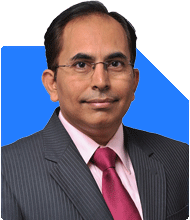Investment Strategy: Multiple Small SIPs vs Large SIPs with Different Themes?
Ramalingam Kalirajan |10902 Answers |Ask -Follow
Mutual Funds, Financial Planning Expert - Answered on Jul 27, 2024
He has an MBA in finance from the University of Madras and is a certified financial planner.
He is the director and chief financial planner at Holistic Investment, a Chennai-based firm that offers financial planning and wealth management advice.... more

Hello. I have invested in multiple sips of small amounts rather than few sip of large amount. I invest monthly 30k approx in all of these. What is better according to you 1. Multiple sips of small amounts with similar themes or categories 2. Few sips of large amounts in which the theme or categories don't overlap. Also please help with advantages and disadvantages for the same.
Monthly Investment: Rs. 30,000
Strategy: Multiple SIPs of small amounts
Analysis: Multiple SIPs of Small Amounts
Advantages
Diversification:
Spreads risk across different funds
Reduces the impact of poor performance of any single fund
Flexibility:
Easier to manage and adjust individual SIPs
Allows for testing different funds and strategies
Cost Averaging:
Smaller amounts spread across funds help in cost averaging
Reduces the risk of investing a large amount at the wrong time
Disadvantages
Overlapping:
Investing in similar themes/categories can lead to overlapping
Reduces the benefit of diversification
Management Complexity:
Requires more time and effort to monitor and manage multiple SIPs
Tracking performance becomes cumbersome
Higher Expense Ratios:
Multiple funds can lead to higher overall expense ratios
Increases the cost of investment
Analysis: Few SIPs of Large Amounts
Advantages
Focused Investment:
Allows for more substantial investment in selected high-performing funds
Easier to manage and monitor
Reduced Overlapping:
Careful selection of non-overlapping themes/categories enhances diversification
Reduces redundant exposure to the same sectors
Cost Efficiency:
Lower overall expense ratios compared to multiple small SIPs
Economies of scale in fund management
Disadvantages
Higher Risk:
Concentrates risk in fewer funds
Poor performance of any single fund has a more significant impact
Less Flexibility:
Less room to test and experiment with different funds
Adjustments require more significant changes to the portfolio
Potential for Missed Opportunities:
Focusing on fewer funds may lead to missing out on high-performing funds
Limits exposure to diverse market opportunities
Recommended Approach
Balanced Strategy
Diversification:
Maintain a balance between multiple small SIPs and a few large SIPs
Ensure diversified exposure to different themes/categories
Non-Overlapping Funds:
Select funds with minimal overlap in investment themes
Optimize diversification by including large-cap, mid-cap, small-cap, and sector-specific funds
Regular Review:
Periodically review and adjust the portfolio
Rebalance to maintain desired asset allocation and risk levels
Example Allocation
Core Portfolio:
Invest in a few large SIPs in diversified funds (e.g., large-cap and multi-cap funds)
Ensure these funds cover broad market exposure
Satellite Portfolio:
Invest in multiple small SIPs in specialized funds (e.g., sectoral and thematic funds)
Focus on specific opportunities and growth potential
Final Insights
Diversified Investment: A balanced approach enhances diversification and risk management
Cost Efficiency: Focus on minimizing expense ratios while maintaining flexibility
Continuous Monitoring: Regularly review and adjust your portfolio to align with your financial goals
Best Regards,
K. Ramalingam, MBA, CFP,
Chief Financial Planner,
www.holisticinvestment.in
You may like to see similar questions and answers below
Ramalingam Kalirajan |10902 Answers |Ask -Follow
Mutual Funds, Financial Planning Expert - Answered on Apr 05, 2024
Ramalingam Kalirajan |10902 Answers |Ask -Follow
Mutual Funds, Financial Planning Expert - Answered on May 15, 2024
Ramalingam Kalirajan |10902 Answers |Ask -Follow
Mutual Funds, Financial Planning Expert - Answered on Jun 21, 2024
Vivek Lala |323 Answers |Ask -Follow
Tax, MF Expert - Answered on Aug 25, 2024
Naveenn Kummar |235 Answers |Ask -Follow
Financial Planner, MF, Insurance Expert - Answered on Sep 04, 2025
Anu Krishna |1749 Answers |Ask -Follow
Relationships Expert, Mind Coach - Answered on Dec 17, 2025
Anu Krishna |1749 Answers |Ask -Follow
Relationships Expert, Mind Coach - Answered on Dec 17, 2025
Radheshyam Zanwar |6748 Answers |Ask -Follow
MHT-CET, IIT-JEE, NEET-UG Expert - Answered on Dec 17, 2025
Anu Krishna |1749 Answers |Ask -Follow
Relationships Expert, Mind Coach - Answered on Dec 17, 2025
Dr Shakeeb Ahmed Khan |184 Answers |Ask -Follow
Physiotherapist - Answered on Dec 17, 2025
T S Khurana |538 Answers |Ask -Follow
Tax Expert - Answered on Dec 17, 2025
T S Khurana |538 Answers |Ask -Follow
Tax Expert - Answered on Dec 17, 2025
Janak Patel |72 Answers |Ask -Follow
MF, PF Expert - Answered on Dec 17, 2025
Ramalingam Kalirajan |10902 Answers |Ask -Follow
Mutual Funds, Financial Planning Expert - Answered on Dec 17, 2025
Samraat Jadhav |2511 Answers |Ask -Follow
Stock Market Expert - Answered on Dec 17, 2025






























